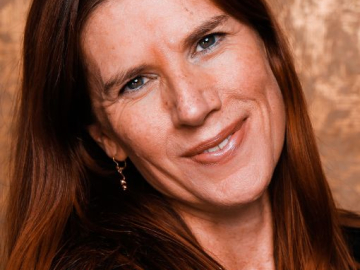How we co-create customized executive programs

We attribute this recognition to our dedication to working in very close partnership with our clients to create the most impactful programs, ensuring their needs and challenges are at the forefront. Our goal is to design programs that truly embody “transformation through learning and development.”
So, what does our co-creation process look like?
Understanding the client: We start by immersing ourselves in the client’s world, striving to grasp the intricacies of their business model, the strategic challenges they face, and the unique nuances of their organizational culture. It is essential for us to not only understand the company at a macro level but also to zoom in on the individuals — the program’s target audience. We delve into their specific learning needs, aspirations, and potential development trajectories. For a holistic understanding, we meticulously review a range of materials. This includes business reports that shed light on the company’s performance and direction, past program schedules that offer historical context, other learning offerings that might intersect with our program, and HR strategies that provide a window into the company’s future talent and leadership vision.
Engaging with internal stakeholders: To align our program seamlessly with the client’s objectives and garner broad-base support, we actively engage in discussions with a range of internal stakeholders. This includes prospective learners, who are the primary beneficiaries of the program; senior leaders from various organizational departments, offering a multifaceted perspective; and HR professionals with expertise in areas such as talent management and Learning & Development (L&D). Each of these interactions is instrumental, assuring the program’s relevance and sustained impact.
Collating and reviewing insights: After gathering all the information, we sit down with the client to go through the insights. This is in line with our vision statement: “We question existing beliefs and problem definitions, offer fresh perspectives, and empower our participants and clients to gain new insights and apply their learnings effectively.” In this, we sometimes challenge the client’s initial beliefs about the problem and its potential solutions, thus addressing the root causes rather than its symptoms. While this can lead to challenging conversations, we believe it’s crucial for creating real impact. This collaborative review confirms that we are on the same page and helps us identify the most vital takeaways.
Brainstorming and designing: Armed with these insights, our team embarks on an initial brainstorming session. This is not mere ideation; it is a collaborative effort where diverse perspectives converge to create a blueprint for the program. We explore a myriad of design possibilities, from identifying industry-leading speakers who can offer invaluable expertise, to conceptualizing interactive learning formats that foster participant engagement. Most importantly, we delve deep into potential content topics, ensuring they are both relevant to the client’s needs and aligned with the latest trends and best practices in executive education. On this basis, we generate multiple program design ideas.
Co-creation workshop: The brainstorming phase culminates in a comprehensive co-creation workshop. Here, all key stakeholders from the client side come together with the ESMT team. Our focus is on crafting a cohesive learning journey with a clear beginning, an engaging story in-between, and a definitive end. This journey is only effective when we have a deep understanding of what the client aims to achieve and how we can best support those goals. During the workshop, we refine the program design based on collective feedback to align with desired outcomes. Less is usually more, and a focused, well-defined journey can have a more profound impact than a series of disconnected sessions, no matter how exciting they may be.
Iterative feedback loop: Our commitment to co-creation does not end once the program is launched. We continually seek feedback from participants and our client partners, so that the learning journey remains relevant and impactful.
Our co-creation process is more than just a methodology; it is a deeply held belief rooted in genuine interest, collaboration, and a shared vision. While we are honored to have achieved a #1 ranking for "aims achieved," we recognize that it is the time and energy invested by all involved that truly makes the difference. This investment not only strengthens our programs but also amplifies their impact.
Co-creating with Lufthansa Group
Our recent work with the Lufthansa Group on updating their senior leadership program “F-Course,” which is now in its 100th edition, gives a glimpse into how we co-create. Karin Greven-Linden, program manager at the Lufthansa Group Leadership Academy, shares her impressions from the co-creation process:
How would you describe your overall experience during the co-creation process?
The overall experience during the co-creation process of the new design of our F-Course program can be described in one word: “collaborative.” ESMT managers and we merged into a joint F-Course program team with one common goal: to create a brand-new leadership development program that included a transformational experience for participants. Always at eye level and open for diverse perspectives, the ESMT team efficiently led us through the process — creating an atmosphere for dialogue and discussion as well as enthusiasm and momentum, with a clear focus on on-time delivery.
Which different stakeholders within Lufthansa Group were involved in the co-creation process, and what value did they bring?
We involved stakeholders from a number of Lufthansa Group companies — from senior executives to former F-Course participants and HR experts. This approach allowed for a diverse and broad perspective on the current needs and burning topics of the Lufthansa Group organization to be addressed in the future program design.
How did the LHG/ESMT team prioritize the most important insights from the stakeholder conversations?
Based on the diverse and deep insights of the ESMT team, we jointly went through a process of open discourse and conversations, always challenging our assumptions and the status quo, resulting in a completely new and innovative program approach.
Are there any best practices or lessons learned from this co-creation that you would recommend to other organizations looking to co-create learning programs?
Trust the new process. Be open to innovative and unconventional ideas and approaches. Be brave and try to go new ways and allow the ESMT team to unfold their creative potential.
How has participant feedback from initial program modules influenced the design of subsequent modules?
We attach great importance to a structured and anonymous feedback survey after each program module. Based on these feedbacks, the ESMT team facilitated a “lessons learned” session after each module to openly discuss every single feedback and to decide how to incorporate these insights in the design of the next module. From my point of view, we went through a continuous learning process along the subsequent program modules, tailoring the next module to the feedback and specific needs of the participants – a true customer-centric experience.

